8 Easy Steps to Instagram Hashtag Analytics [2025]
Table of contents
Hashtags are everywhere. On Instagram especially, they’ve become a powerful tool for users, creators, and brands alike. But how to use them well? Are hashtags still alive and relevant in 2025? The short answer: Absolutely!… If you use them smartly.
In this straightforward guide, I’ll break down how to analyze a hashtag, what metrics matter most, and how to turn that data into meaningful insights.
Whether you’re looking to build better brand partnerships, track campaign performance, or monitor trends and competitors, smart hashtag use is still a game-changer.
Quick summary:
- Native hashtag analytics is not enough. You need a reliable media monitoring tool that will give you detailed insights beyond generic hashtags.
- Hashtag analysis will give you a priceless knowledge of what works, what doesn’t, and who you should cooperate with to move your social media strategy forward.
- With an advanced tool, you can track your hashtag campaigns on various sources, spy on your competitors’ hashtags, and generate insightful reports.
Let’s dive in!
What is the hashtags analytics?
Hashtag analytics tracks and analyzes how specific hashtags perform on social media to improve strategy.
But here’s the trap: a hashtag strategy isn’t just about throwing 30 trending hashtags into a post, tracking them, and hoping for the best.
Real success comes from understanding which specific hashtags actually align with your brand, resonate with your audience, and drive real reach, engagement, and growth.
To make this, it’s key to analyze the right metrics. Here is my list of hashtag metrics I look at:

Why should you track Instagram hashtags?
Let’s start with the basics. On Instagram, your content’s visibility depends a lot on audience engagement. But what does that mean?
Imagine you post something that only reaches people uninterested in your content.
They scroll right past it. There are no likes, comments, or shares. When that happens, the Instagram algorithm notices and pushes your post down in feeds.
Without it, your content gets shadowed because it’s not engaging the right audience.
That’s why hashtag performance matters for companies, influencers, or anyone trying to grow on social media platforms. With more relevant hashtags, you have more power to reach the right audience and grow your online presence effectively.
But it doesn’t stop there. With hashtag analytics, you can:
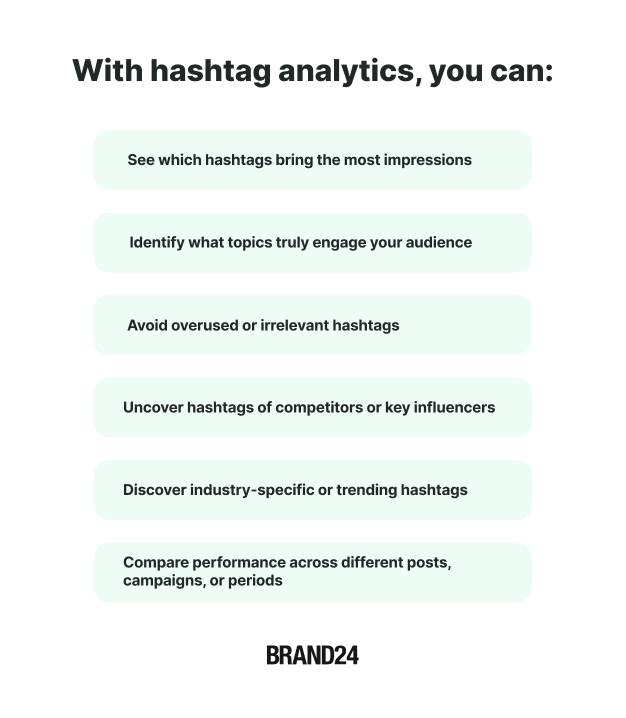
Up your Instagram game with hashtag monitoring!
How to Start Instagram Hashtag Analytics?
First, I like to see how a hashtag I’ve used performs.
If you have a Business or Creator account on Instagram, here’s my go-to approach: I open the post, tap View Insights, and check out the Impressions from Hashtags.
It gives me a quick snapshot of how specific Instagram hashtags contributed to my Instagram post’s visibility. What you’ll get here are hashtag metrics like:
- How many views came from hashtags
- Overall reach
- Profile visits, likes, comments, and shares

But the truth is, this only scratches the surface of what hashtag monitoring tools offer.
With the right hashtag analytics tools, you can find:
- What are the other hashtags your target audience is using
- What are users talking about
- Identify the hashtag sentiment: if they’re positive, negative, or neutral
- Benchmark with competitors
- Uncover engagement patterns
- Connect hashtag results to the demographics and behaviors of the audience.

Also, I prefer advanced hashtag tools that track across major social and non-social platforms, so I can compare Instagram performance with other platforms and see where it’s working best.
Try the Instagram hashtag analytics tool!
How to Analyze Hashtags on Instagram?
Here’s how I do it using Brand24, a hashtag analysis tool, as an example. Of course, you can use a different free hashtag tracking tool.
However, just make sure the tool you choose connects with Instagram (or whichever platform you want to track).
Let’s dive in!
01 Volume of mentions
I always start hashtag analytics by looking at mention volume.
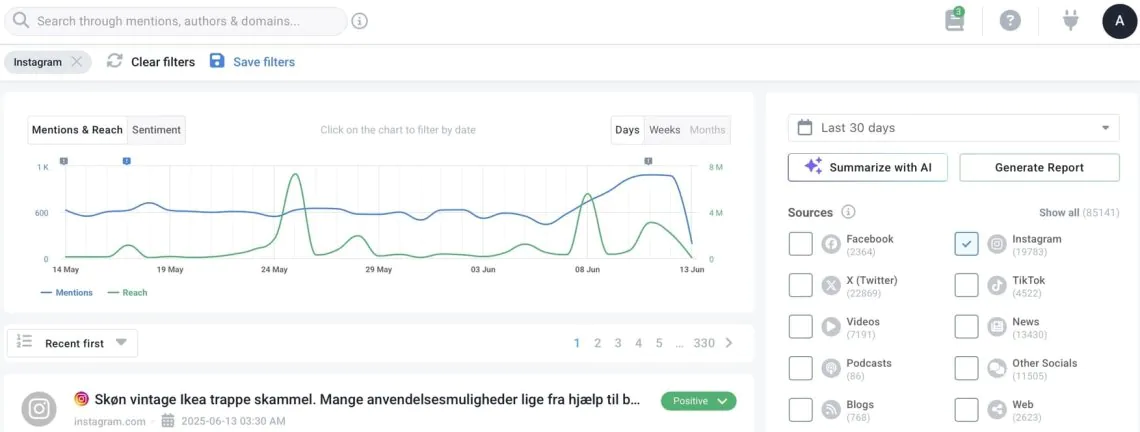
I like to track hashtag usage in a graph and filter by a specific period. This is particularly helpful when launching campaigns, opening new locations, or promoting hashtag events.
Look here.
I took IKEA’s Instagram hashtag #STOCKHOLM2025, for example. Want to focus just on Instagram? Easy. I simply select Instagram from the toolbar on the right.
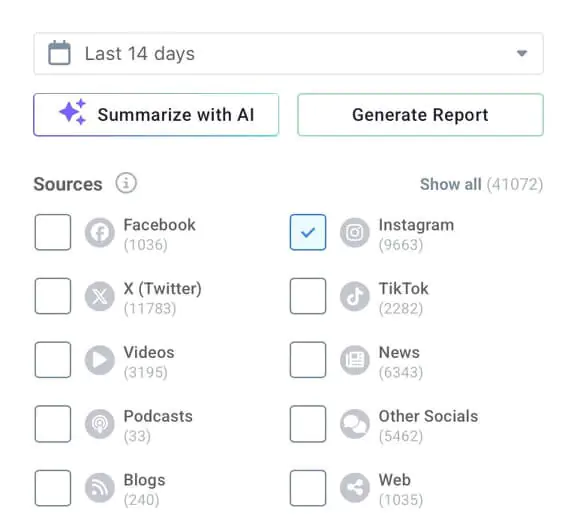
Voila! Now I analyze how hashtags perform only across Instagram.
But what does this sudden increase in mentions mean?
Hashtag tracking goes beyond knowing that a hashtag is being used. It’s about understanding the context behind it. Why is it being used, who is using it, and when? That’s where real Instagram insights begin.
There is an answer! Do you see this little exclamation mark icon?

It’s an event detector that presents sudden spikes or drops in mentions. By clicking the icon, I can easily identify it and see its reason.
Find out who is using your hashtag!
02 Social media reach
Another key indicator to watch is the social media reach of your hashtag on Instagram.
This metric shows how many social media users could see your hashtag in their feeds.
For example, if I post something on Instagram using #STOCKHOLM2025, all my followers will see that post, and that visibility becomes part of the hashtag’s overall reach.

As you can see, even though IKEA’s new collection has few mentions, its reach is impressive! Thanks to users with strong followings.
But there, as you see, I have all key hashtag metrics in one place, such as: user-generated content (UGC), social media likes, comments & shares. And with the QuickReports option, I can export everything in just a few clicks.
Here you can read more about how to increase Instagram reach.
03 Hashtag popularity detection
One underrated but powerful metric in hashtag analytics is the presence score.
The presence score shows how often your hashtag appears in online conversations. It reflects the frequency and consistency of its use.
Check your hashtag’s popularity!
A high presence score means your hashtag is being used regularly by different social media users. That’s a clear sign it’s gaining traction and visibility and becoming a key part of your Instagram strategy.
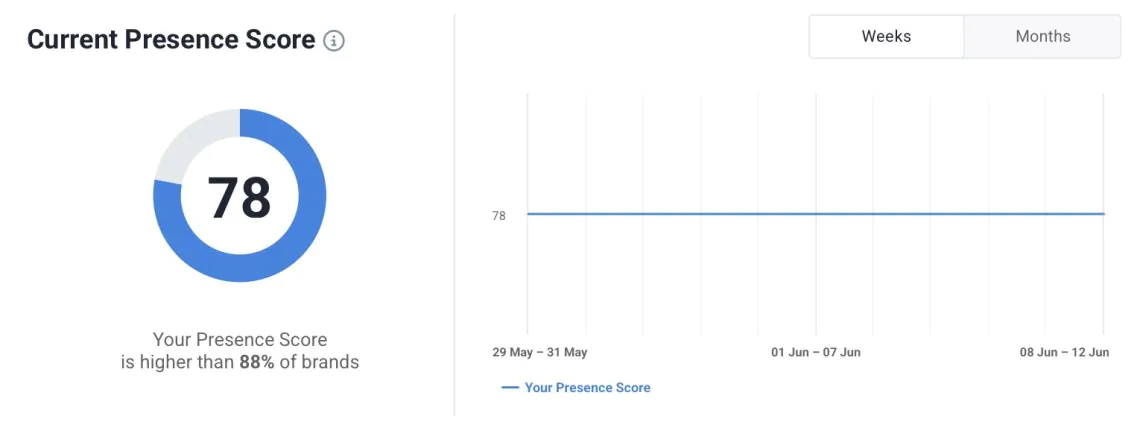
The presence score is a great complement to other metrics such as reach, engagement metrics, and the number of mentions.
04 Hashtag sentiment analysis
Having a trending hashtag that performs well might seem like a win. But here’s the thing. Just because a hashtag is getting attention doesn’t mean the sentiment behind it is positive.
With the right hashtag tracker or social media monitoring tool, I can go beyond impressions and dive into how people feel about the content.
Are my audience excited? Frustrated? Neutral?
Sentiment analysis helps me spot the target audience’s emotions and their relevant hashtags, improve my social media analytics, and avoid investing in hashtags that trigger negative reactions.
Let’s look at how people feel about the new IKEA collection:
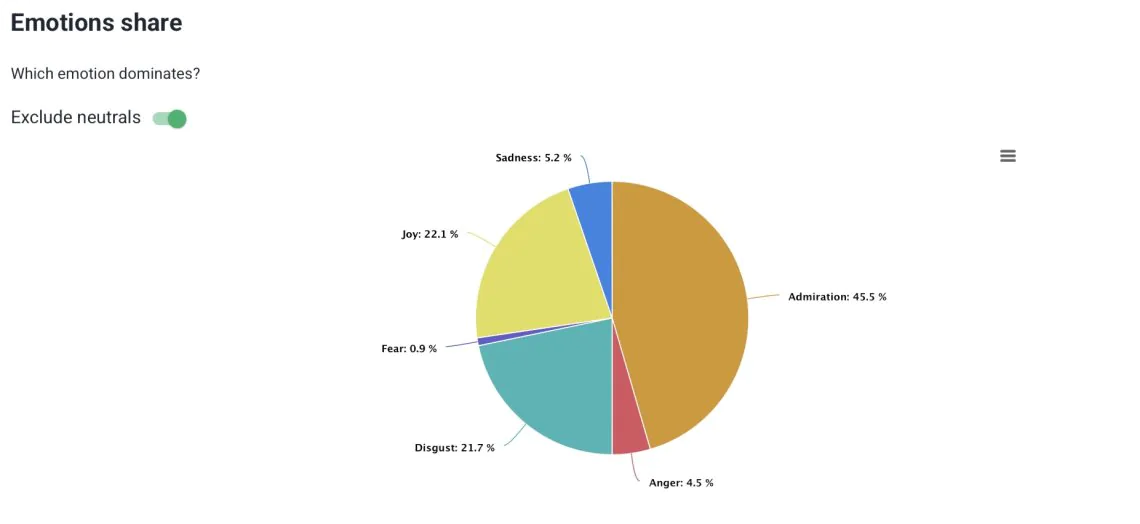
Then, I’m going deeper to see how emotions shift over time.
Is the campaign landing well? Does the audience connect with the content? Are they reacting positively to the new offer?
Looking at this chart, it’s pretty clear that people are enjoying IKEA’s new collection. There’s a consistent rise in admiration, and even joy gets a noticeable bump.
How does the audience perceive the brand?
05 Boost your influencer marketing
With hashtag analytics, you can spot people already talking about your brand, using your products, and tagging your branded hashtags.
These voices are a goldmine! Perfect for authentic, impactful collaborations that feel real, not staged.
With the Influencer tab, I instantly see who’s driving the conversation, who truly influences my target audience, and who’s already aligned with my brand.
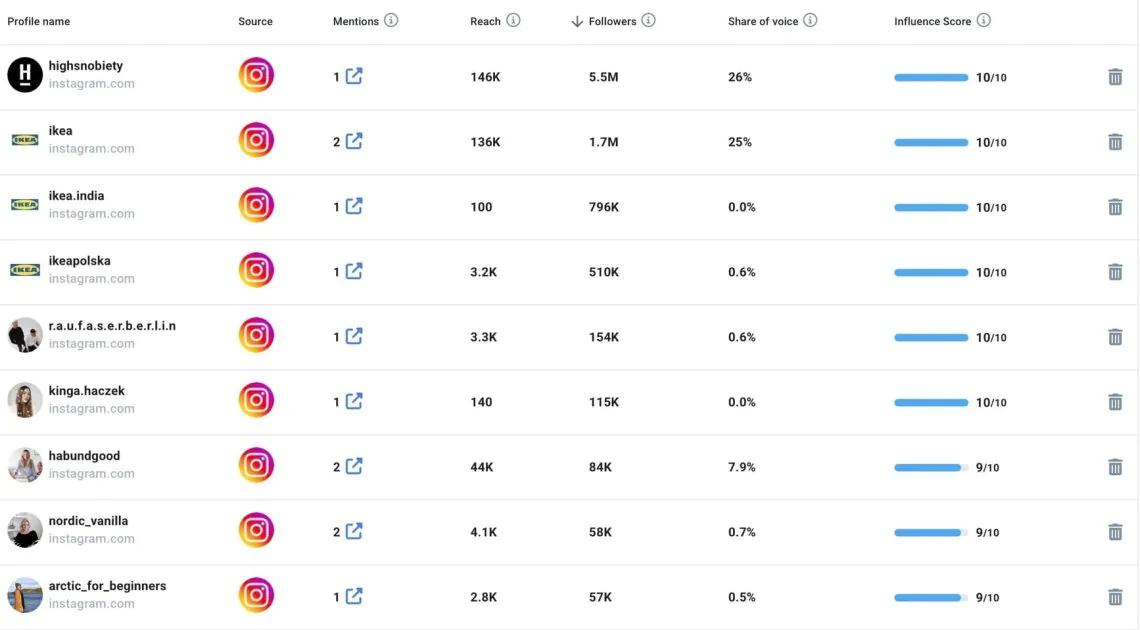
Know the best influencers for you!
06 Check other relevant hashtags
Hashtag analytics tools make uncovering related hashtags connected to my main topic easy. It’s an essential step in refining both my hashtag strategy and boosting overall hashtag marketing.
This becomes especially valuable when planning a marketing campaign. I often mix in niche or less popular hashtags that may not be trending but resonate deeply with the exact audience I want to reach.
I can build a more targeted and effective social media strategy by using social media analytics to track hashtags and understand real-time hashtag usage. One that’s grounded in data, not guesswork.
Whether aiming for broader reach or deeper engagement, finding the right mix of core and related hashtags is key to campaign success.
Now, let’s explore the hashtags people are using around the #Stockholm2025 collection:
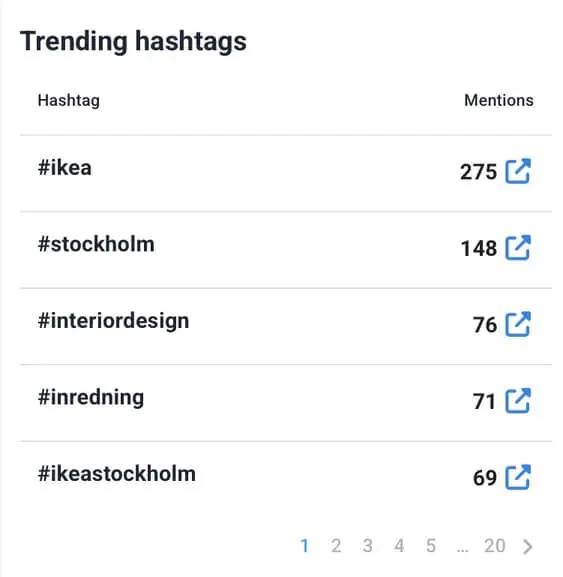
07 Monitor hashtag performance over time
Hashtag tracking is only truly valuable when I can see whether I’m growing or just staying in place.
That’s why the “Compare Periods” feature is essential for me in any hashtag analysis tool I use. It allows me to select and analyze custom date bands to understand how a hashtag is evolving.
Whether it is gaining speed or starting to decline. I want to know about it.
Let’s check #STICKHOLM2025 performance over time:
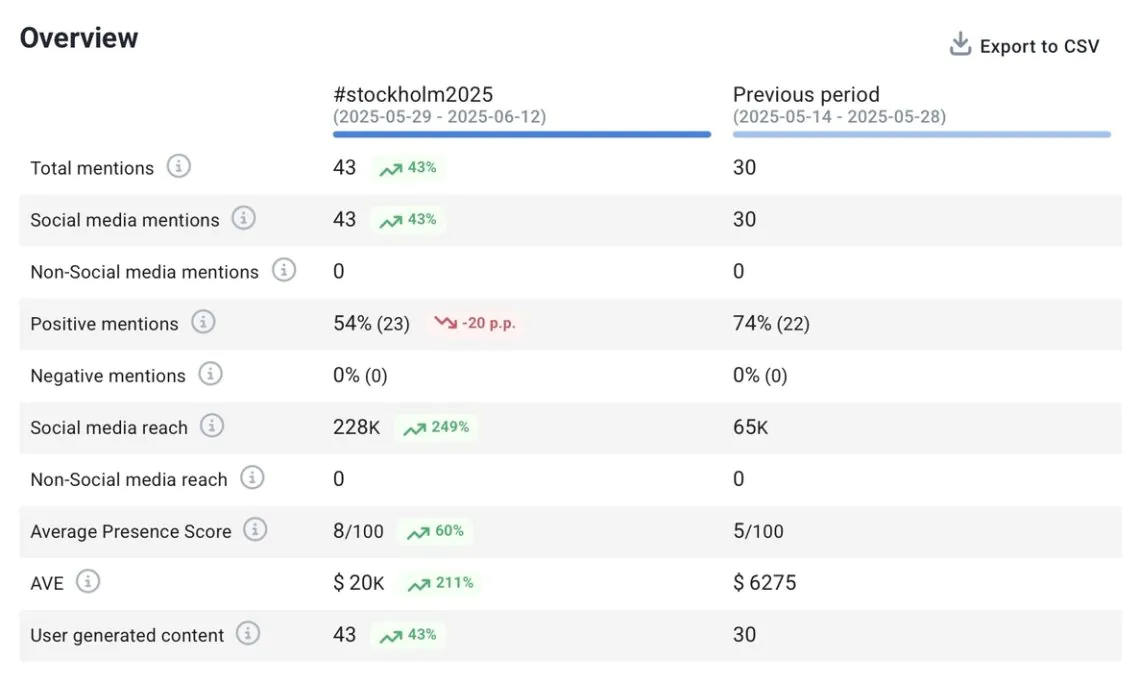
Mentions increased by 43%. So yes, more people are using the hashtag, that’s great! But there’s still room to grow when it comes to positive sentiment and user-generated content (UGC).
It’s powerful features when running a social media campaign, launching a new product, or responding to seasonal trends. By digging into detailed hashtag data, I can track changes in hashtag performance across key metrics like mentions, reach, sentiment, and engagement.
Analyze hashtags on Instagram with a professional tool!
08 Compare performance with competitors
Tracking your own hashtag is important, but comparing it to your competitors? That’s where real strategy begins.
The right hashtag tracking tools enhance my Instagram analytics by showing how a specific hashtag performs against others in my industry or similar campaign hashtags.
This helps me identify emerging trends, uncover engagement gaps, and spot fresh opportunities to stand out.
It’s not just about visibility. It’s about turning competitive intelligence into a stronger, data-driven social media strategy that outperforms the rest.
For example, I compared #IKEA and #Wayfair:
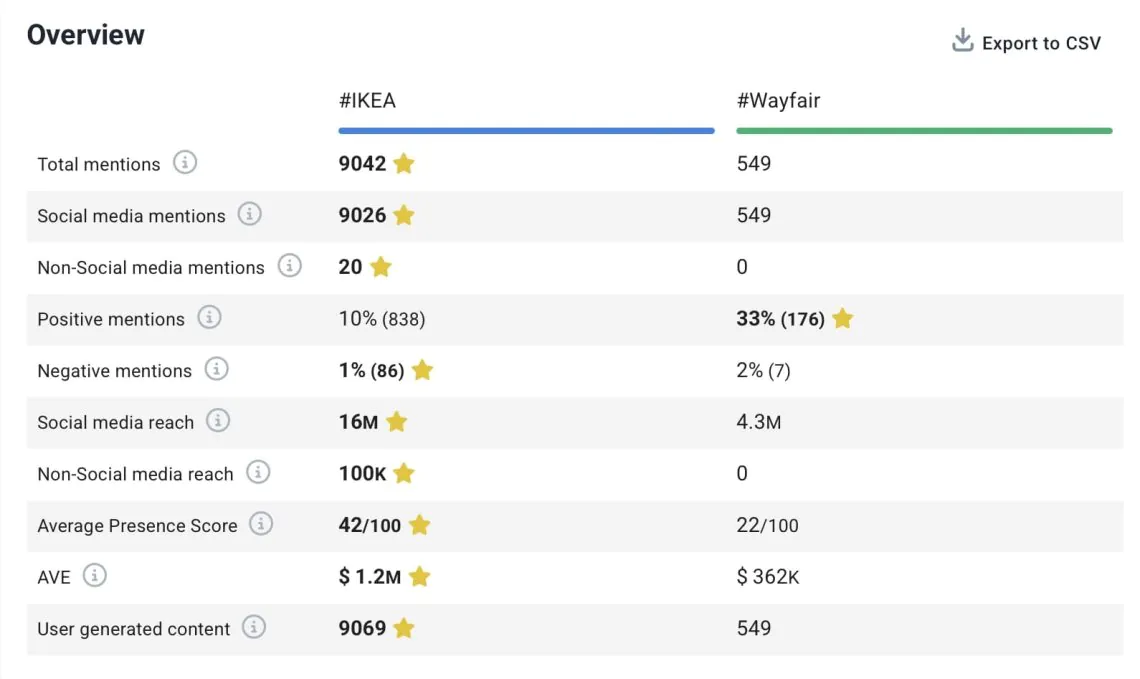
IKEA’s hashtag outperforms Wayfair’s by a factor of four in reach alone. That means significantly more people are seeing and engaging with IKEA’s content.
Benchmark against competitors!
Hashtag Analytics: Types of Hashtags
When delving into hashtag analytics, it’s essential to understand the different types of hashtags. Not all hashtags work equally.
Each type serves a unique purpose in the overall hashtag strategy and affects hashtag engagement on Instagram differently.
Let’s review the main types of hashtags:
Location hashtags
They connect your content to a specific place, a city, neighborhood, event, or landmark. Using location hashtags helps you target a local audience or people interested in that area.

Branded hashtag
A company hashtag is one way to build brand awareness and establish yourself as an expert in a given niche.
Measuring the performance of a company hashtag on Instagram will show you how many people talk about your company, what sentiment it generates, and how many people it reaches.
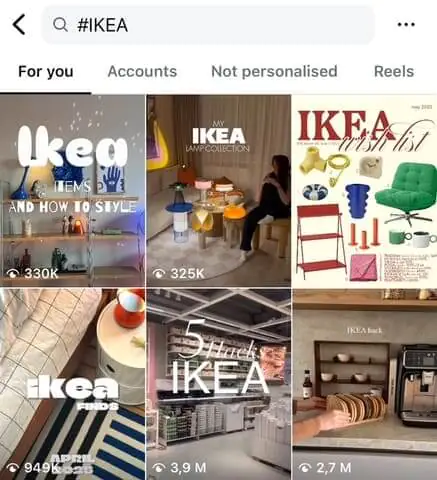
Get more insights on your Hashtag!
Event hashtag
Instagram is perfect for event marketing.
Event hashtags help spread the word, attract attendees, sponsors, and speakers, and encourage user-generated content (UGC) to boost engagement and buzz around your event.

Marketing campaigns & ad hashtags
Adding a dedicated hashtag to your marketing campaign lets you measure its performance more precisely. But before you dive in, define the goal.
A brand awareness campaign will look different from a social media sales push, and the hashtags you track should reflect that. If your aim is visibility, you’ll likely focus on a branded hashtag. You might pair conversion or community engagement with related, ad-specific, or trending hashtags to expand reach.
The right hashtag makes monitoring results through hashtag tracking tools simple, offering valuable insights into your campaign’s performance in real time.

Get inspired by 8 Creative Hashtag Campaigns You Should Look Up To
Product & service hashtag
I like to think of product and service hashtags as specific tags that help social media users discover what I offer.
Instead of relying only on generic hashtag suggestions, I use relevant hashtags that reflect my products or services. When I combine those with popular or trending hashtags, I can reach a broader yet still targeted audience.

It’s not just about reach — it’s about reaching the right people.
Read more here: Go beyond the basics with a powerful hashtag counter.
Reach the right people with the social listening tool!
My tips
Use AI!
Tools that offer AI features will become your best friend. One of my fav features on Brand24 is Brand Assistant, which helps analyze trends, generate hashtag sets, and suggest content ideas tailored to my niche.
I simply ask questions and get the analysis.

Here are 3 of my fav marketing prompts for Instagram analysis:
- Analyze my last 10 Instagram posts and recommend high-performing hashtags based on engagement trends.
- Give me a mix of 10 popular and niche hashtags for a post about [topic], targeting [audience].
- Compare the performance of [hashtag1] vs. [hashtag2] on Instagram over the past month and suggest how to optimize my hashtag strategy.
Start a conversation with Brand Assistant!
Curious about more benefits of hashtag analysis? Learn the case study of Wimba, a startup that designs 3D/4D-printed animal prosthetics.
Wimba uses AI-powered hashtag tracking through Brand24 to monitor popular hashtags and conversations across multiple countries. This creative use of hashtag analytics shows how powerful real-time social data can be when turned into meaningful action.

Take a look at the whole case study and get inspired!



